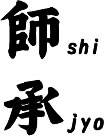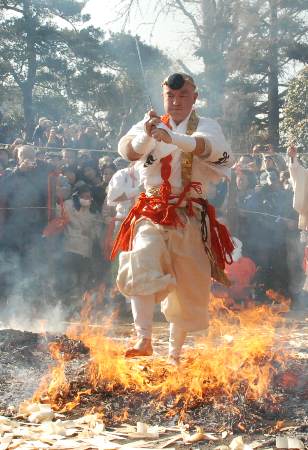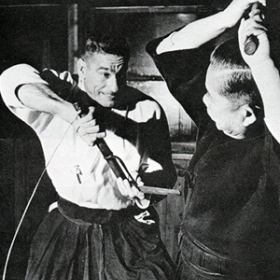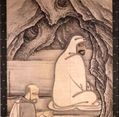|
Shijyo: Shi (meaning teacher) Jyo (meaning to receive) Excerpts from: March 5th, 1992 lecture by the writer Shiba Ryotaro at Columbia University, Donald Keene Japan Cultural Study Center.
The word is SHIJYO, and the concept is strictly practiced. One metaphor provided likes moving water from one vessel to another. If your teacher pours an amount effortlessly to your cup then you must imitate this precisely when transferring water. At first glance the reader might literally understand this to be about imitation. The choice of water which has no form of its own might provide a clue. It is much more about the obligation of the student to learn perfectly that which the teacher instructs. Only in this way can the essence be transmitted from generation to generation without compromise. Furthermore an oath is taken that the student will not talk about this water, even to the one’s parents, siblings or closest friends. Shijyo as written earlier originated within the methodology of Mikkyo密教. In Mikkyo, your teacher is a manifestation of the Buddha reincarnated (Ho-toke). In Mikkyo, your body will be received directly by Ho-toke’s statue after death. Today, at Koyasan, the ritual of monks feeding Kukai’s mummified corpse as if he was alive continues. The prevailing wisdom then was that your teacher was so honorable that he is not to be questioned, doubted or challenged. The custom of Mikkyo also continues in Tibet with the Mongolian Rama Buddhism.
My instructor was clearly describing the social pressure of how he would be judged both on and off the mat. I superficially likened the experience to when I worked for a large corporation and would have a business meal with senior executives chuckling about not ordering something like French Onion Soup as there is no graceful way to deal with the baked cheese. My instructor’s recounting of his experiences was not just a simple matter about social graces. He was being judged both on and off the mat to determine if he was worthy of the transmission of knowledge that these teachers had within their power to pass on or withhold.
In college I had a rather famous Political Science teacher, a colleague of both Kissinger and Brzezinski named Dr. Francis Merriweather Wilhoit. One of his favorite comments was: “where do we draw the line?” Today, I don’t believe that my Iai instructor believed these other teachers to be the Buddha reincarnate. I don’t even know if he practices any form of Buddhism. I’m certain that I’ve had teachers that are less than honorable. The question about Shijyo is how it is articulated and executed. It is up the teacher and the student to determine where the line must be drawn in this trust relationship in today’s environment. It is easy to understand how Mikkyo and the concept of Shijyo can be perverted into something that thwarts growth, intellectual curiosity and even the actual pure transmission of a specialized knowledge. By the same token, it is hard to dismiss that by reducing the relationship between teacher and student to intellectual dialectic something deeper might be lost. Certainly the depth of understanding of a subject will vary teacher by teacher as well as the abilities to transmit the thing to be learned. Then too there is the question of how well, how often, and how long it takes to transmit that worthy thing? Can it only be done one on one, in small groups, in great numbers? How does the process improve and make more consistent (quality control) the transmission process? Do the benefits outweigh the disadvantages? Where does one draw the line? Truly today’s social contract between teacher and student allows both to determine where they will draw the line and to decide whether or not to accept one another in the gift of the pursuit of knowledge.
0 Comments
Leave a Reply. |
AuthorRick Categories
All
Archives
January 2017
|
|
Po Box 232 Severna Park, MD. 21146
|
Copyright © 1996 - 2023



 RSS Feed
RSS Feed






